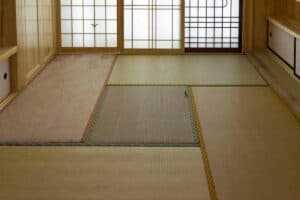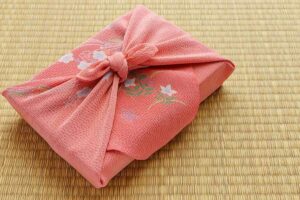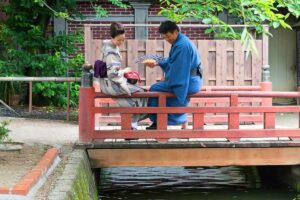As a traveler in Japan, you’re sure to come across kimonos.
These beautiful pieces of clothing are often worn as formal wear, but they can also be seen on tourists and locals alike in more relaxed settings.
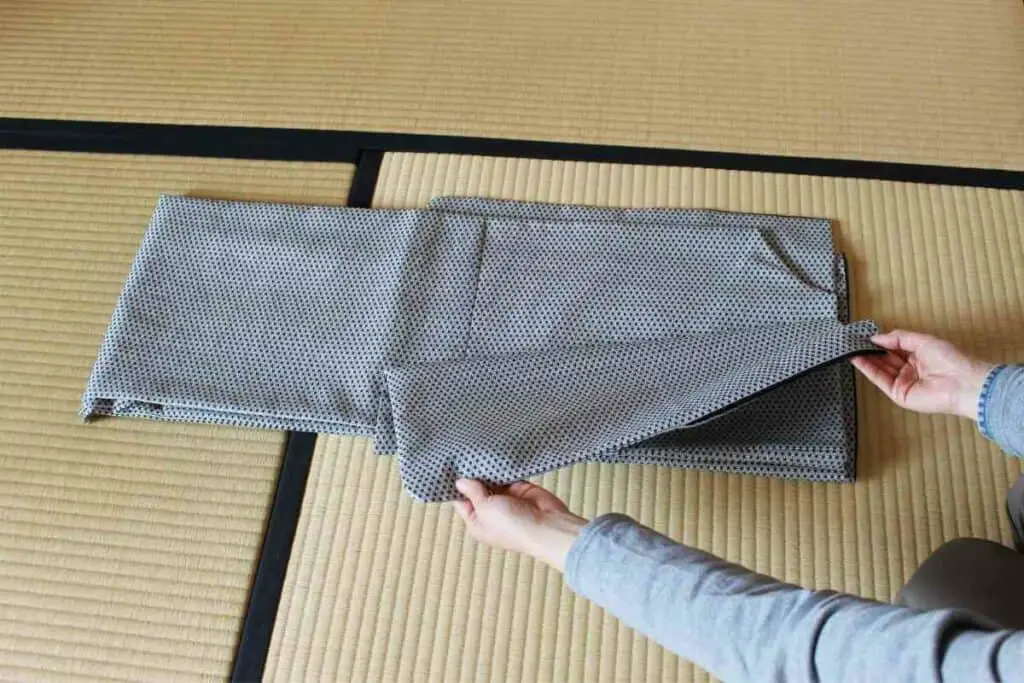
While kimonos can seem intimidating at first, with a little practice you’ll be able to fold them like a pro!
What to Expect? They’re surprisingly easy to fold; even easier than a fitted sheet. If you remember to fold along the seams and straighten all the edges so there are no wrinkles, you’re already halfway there!
Table of Contents
What Is a Kimono?
A kimono is a traditional Japanese garment. It is a long robe with wide sleeves, worn by men and women.
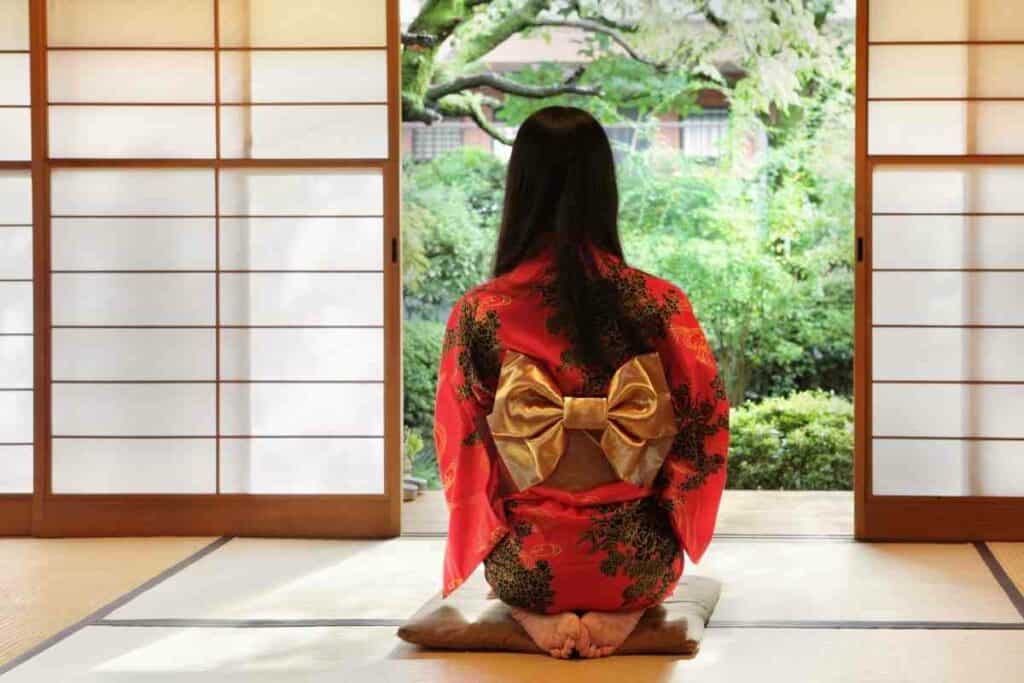
The kimono is often wrapped around the body, secured with a sash called an obi.
Kimonos have a long history, dating back to the Nara period from 710-794 AD.
During This Time – Women wore a tarikubi robe, which consisted of two parts and had several layers. Then from 794-1185 in the Heian period, the robes started being cut and sewn in straight lines.
By changing the seam shape, the robes were able to be adjusted to any body shape and size.
Although the sewing was simpler, the shape was not.
These robes were extravagant and the motifs, color combinations, and symbols reflected a woman’s status.
The robes that were worn during this time had several layers and beautiful sleeves that would fall to the floor.
the Kamakura period, from 1185-1333 is when the garments became much simpler.
The rise of the samurai class and the falling of the court meant the women were wearing fewer layers as a way of showing they were frugal and practical.
The obi was introduced in the Muromachi period from 1336-1573.
Wide sleeves started getting smaller and smaller until they reached a size that resembles the sleeves of a current kimono.
From This Point On – Minor changes were made to the kimono, but they started becoming less popular. Fewer men wore kimonos after ports opened for trade in Japan, and kimonos were banned from military uniforms.
How to Fold a Kimono?
The only thing you need to fold a kimono is ample floor space and an eye for detail.
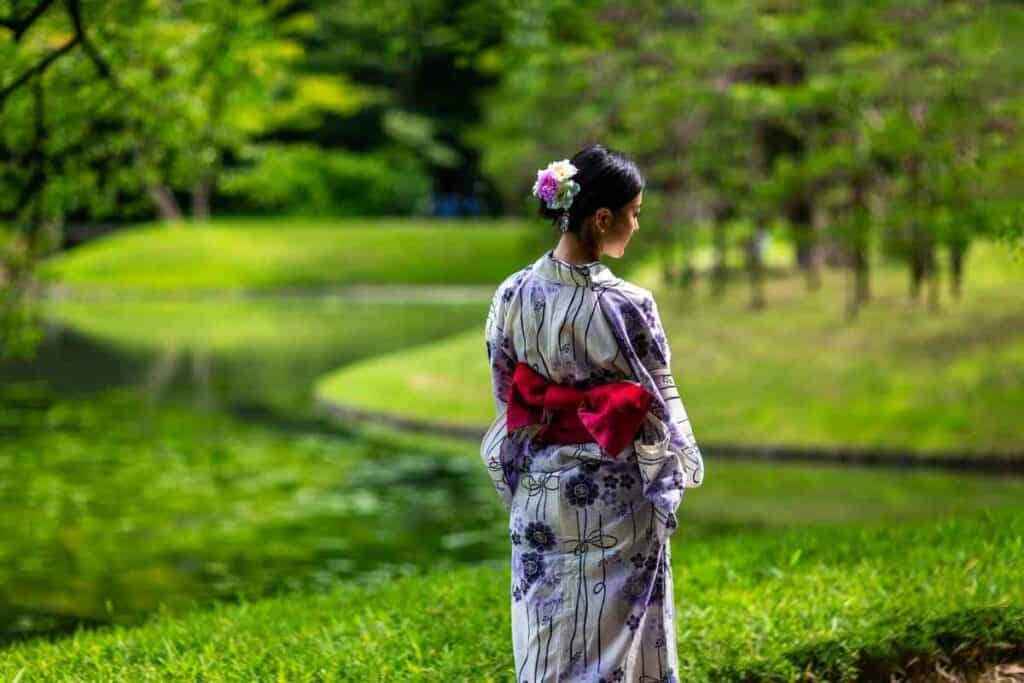
While folding, make sure to always fold along the seams. Doing it this way will keep edges straight, and prevent the garment from wrinkling.
There are a few exceptions to this rule.
When you fold the sleeves at the very end and fold the kimono in half, there won’t be a seam to fold along.
In this case, fold these as neatly as you can.
Step 1
Lay the kimono out on the floor in front of you.
The opening of the kimono should face upwards, the bottom edge should be to your right, and the collar should be to your left.
Step 2
There are two main seams on a kimono.
They start at each shoulder and continue down to the very bottom edge. These are called “wakisen” meaning outer seam.
Take the wakisen closest to you and fold it away from you towards the middle of the kimono.
Straighten out the entire length of the front panel from shoulder to hem.
Step 3
Down the middle of the front panel, you just folded is another seam called the “okumisen” meaning middle seam.
Fold the front panel back along that seam towards the wakisen and straighten out any wrinkles.
Step 4
This is where it starts getting a little complicated.
Now that the very edge of the front panel of the kimono is facing towards you.
Grab the edge of the kimono farthest from you and fold it over to meet the first edge and line up both sides of the collar.
Step 5
In the center of a collar, there is a seam for you to fold inwards.
You’ll know you have done it right when there is a straight line from the cuff of one sleeve, up the shoulder, across the collar, and back down the other sleeve.
Step 6
Now take the wakisen, the outer seam, from the side furthest from you and fold it towards yourself to meet the outer seam closest to you.
Step 7
Now fold the sleeve furthest from you over top of the one closest to you and straighten any wrinkles.
At this point, the kimono should be completely folded in half.
Step 8
Fold the top sleeve in half; folding it back onto itself so the cuff edge meets the center crease of the kimono.
Step 9
Then grab the bottom edge of the kimono and fold it in half making sure to cover the sleeve you just folded.
Step 10
Now carefully turn the kimono over to the other side.
Fold the remaining sleeve over this new side of the kimono.
You should now have a rectangular shape that is ready to be stored.
If you’re the type of person who would rather be shown how to fold a kimono instead of reading about it, here is a video that follows all ten steps.
Final Thoughts
The kimono is a traditional Japanese garment that has a very long history where many changes were made to the design and fit.
If you’re looking to add a touch of tradition to your wardrobe, learning how to fold a kimono is a great place to start.
With our step-by-step guide, you’ll be able to fold your kimono better than you can fold a fitted sheet.
Also Helpful
- 7 Best Japanese Sunscreen Products You Can Buy Online
- 5 Best Japanese Makeup Brushes for a Flawless Finish
- 7 Benefits Of Tatami Mats You Should Know
- The Best Furoshiki Wrapping Cloths: Inspiration, Ideas & Cloths You Can Buy
- Cool Tenugui Towels (10 Best Ones with Bold Japanese designs)
- Japanese Yukata Ideas & Inspiration (20 Creative Ideas)



